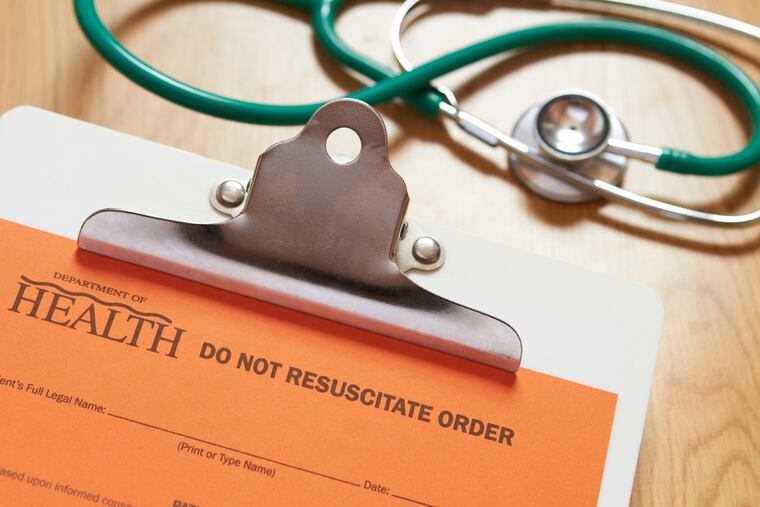Doctors are confused by living wills, study finds

Interpreting a living will is, by definition, a life-and-death activity. So, it's not comforting that, when hundreds of doctors were asked to decide what nine different living wills and related documents meant, they rarely agreed.
Adding the video resulted in statistically significant improvements in agreement in seven of the nine cases.
This is important because if doctors don't understand what patients want, they may give either too much or too little treatment.
Advance directives come in different forms but usually spell out whether patients want lifesaving treatments such as cardiac resuscitation under certain circumstances or whether they prefer to let nature take its course. They are invoked when patients are unable to make decisions, such as after a serious stroke or when they are unconscious.
The study, which was published Wednesday in the Journal of Patient Safety, was led by Ferdinando Mirarchi, an emergency physician at University of Pittsburgh Medical Center Hamot in Erie. Doctors at Temple University School of Medicine and nine other national institutions participated.
Mirarchi said he became interested in misinterpretation of patient documents after he made a mistake while in training in the late 1990s. He decided not to shock a 55-year-old woman's heart back into rhythm, thinking that her living will meant she had a Do Not Resuscitate (DNR) order. "I almost didn't shock her because of what I thought her document said," he said. A colleague stepped in and got her heart working properly again.
Since then, Mirarchi has been involved in studies that show that other medical personnel also have trouble knowing what patients want. Many assume, as he did, that if you show up at the hospital with a living will it means you have a DNR order. "I'm a big advocate of, you should leave your living wills home with your health-care agent or someone who can advocate for you," he said.
While he thinks the documents are valuable, Mirarchi says they are typically written in a way that leans against getting treatment. He thinks over-treatment is more common than under-treatment but said both are "big, valid medical errors."
Mary Kraemer, director of the Temple University Hospital palliative care consult team and a member of Mirarchi's research group, said that, in real life, doctors who have questions about an advance directive ask others for help. She said there is "a lot of confusion," a sign that medical workers need more education about advance directives. "There needs to be better education for all health team members about what the intent is and when they go into effect," she said.
Temple is currently revamping the forms it gives patients to make them "more user-friendly" and easier to understand. At their best, Kraemer said, the documents are "empowering for the patient."
The doctors in the study had particular trouble with a scenario involving a 61-year-old man in cardiac arrest with a living will. Before the video, 69 percent thought he had a DNR when he did not and only 36 percent chose to use a defibrillator to revive him. After the video, only 20 percent thought he had a DNR and 81 percent chose to shock his heart back into rhythm.
"That guy should be treated," Mirarchi said.
He also has started helping patients create medical cards that look a bit like driver's licenses. They quickly state what kind of forms patients have signed and include a QR code that links to a short video explaining their wishes. Mirarchi helps them write a script that fellow doctors can understand. He thinks videos, which are easy to watch on cellphones, communicate more clearly because doctors get visual cues along with the words.
For the study, he and his fellow researchers asked 741 physicians — most were emergency physicians — at 13 hospitals to evaluate how they would handle nine patients in various degrees of cardiopulmonary distress. They either worked with written scenarios based on real cases accompanied by living wills and standard documents known as POLSTS (Physician Orders for Life Sustaining Treatment), or they got all that plus a video.
Would doctors dealing with an emergency really have time to watch a video? Mirarchi thinks they would. "Within the first 15 seconds of those videos," he said, "you get the direction you need."